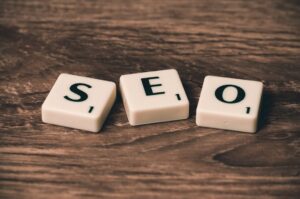So, it’s 2025, and you’re probably still seeing ads everywhere, right? On websites, in apps, maybe even on your smart fridge if you’ve got one of those. For anyone trying to get their message out, or even just understand how this whole online ad thing works, two terms pop up a lot: “display ads” and “programmatic ads.” And honestly, sometimes people use them like they’re the same thing, which is kinda like saying a bicycle and a self-driving car are the same because they both get you places. Not quite.
I mean, if you’re trying to figure out where to put your ad money, this stuff really matters. You’ve got to pick the right tool for the job, or you’re just throwing cash into the wind, basically. And in an age where everyone’s got attention spans shorter than a TikTok video, making your ad count is a big deal.
Think about what we used to call “display advertising.” It’s pretty straightforward. Imagine an old-school billboard, but on a website. That banner ad at the top of a news site, or maybe off to the side, that’s a display ad. Someone, usually an ad salesperson, would talk to the website owner, agree on a price, and then your ad would just… sit there. It’d show up to everyone who visited that page, whether they were a teenager looking for cat videos or my grandma trying to find a recipe. The idea was simple: get your ad in front of as many eyeballs as possible. You buy space, your ad appears. That’s it.
And, yeah, these kinds of ads are still around. They’re good for just getting your name out there, like, “Hey, we exist!” If you’re a big brand and you just want folks to see your logo a bunch of times, a simple display campaign can still do that. You just plop your ad up on a bunch of sites and hope for the best. It’s got a place, especially for general brand awareness campaigns where you don’t really care who sees it, just that someone does. But honestly, it’s not really pushing the envelope in terms of what advertising can do today.
Now, programmatic advertising… that’s where things get way more interesting, and honestly, a bit wild. If display ads are like picking out a specific billboard in a town, programmatic is like having a super-fast robot auctioneer finding the perfect tiny spot on a million billboards, all over the world, in real-time, just for the right person. It’s all about using software and data to automatically buy and sell ad space. So, instead of a human calling up a website, a computer system (called a Demand-Side Platform or DSP) decides in milliseconds if it wants to bid on an ad impression, based on tons of data about the person viewing the page.
What kind of data, you ask? Well, it could be anything from where they live, what they’ve looked at online before, what they’ve bought, even what time of day it is. It’s almost like the internet knows you better than you know yourself sometimes. So, if I’m a coffee company, I don’t just want my ad on a random news site. I want it on a news site, sure, but only when someone who drinks coffee, has looked at coffee machines recently, and lives within 5 miles of my shop is looking at that page. Programmatic advertising makes that sort of super-focused targeting possible.
This whole process happens so fast, you wouldn’t even notice it. Like, when you click on a web page, before the page even fully loads, there’s this lightning-fast auction happening behind the scenes for that ad spot. Advertisers are bidding against each other for the chance to show their ad to you, specifically. The winner gets to show their ad. It’s pretty wild when you think about it.
In 2025, this distinction between simple display and programmatic is even sharper. The cookie situation, for instance, is a huge deal. Remember those third-party cookies that tracked you across websites? They’re basically on their way out. This means traditional display advertising, which often relied on those cookies for even basic audience segmentation, is going to have to adjust big time. Programmatic, on the other hand, is already shifting. It’s leaning much more heavily on first-party data (stuff a company collects directly from its own customers) and contextual targeting (showing ads based on the content of the page, not the user’s browsing history). That’s a pretty smart move, I believe. It means ads might be less “creepy” and more relevant to what you’re actually doing right now.
One of the coolest things about programmatic is how much control it gives you, if you know how to use it. You can set really specific goals: “I want to get 100 new sign-ups, and I don’t want to pay more than $5 per sign-up.” The system then tries to meet that goal. With old display ads, you just paid for impressions, and hoped folks would click. Here, it’s about actual results. And you can change things on the fly. If an ad isn’t working, you just turn it off. If one audience segment isn’t responding, you adjust. It’s not a set-it-and-forget-it kind of thing, but it lets you be way more nimble.
And speaking of nimble, the ad formats themselves are evolving. Programmatic isn’t just for those basic banner ads anymore. It’s used for video ads that play before your YouTube clip, audio ads on Spotify, even ads on connected TV (like when you’re watching Hulu). It’s basically everywhere now. So, when you’re thinking about your ad strategy, it’s not just about what a banner looks like; it’s about the whole experience, wherever your audience hangs out.
So, when do you pick what?
Well, if you’re a local pizza shop and you just want people in your town to know you exist, maybe a few well-placed, simple display ads on local news sites could do the trick. It’s a bit like putting up flyers in the neighborhood. You want to blanket the area.
But if you’re a company selling fancy, custom-built PCs, you don’t want to show your ads to everyone. You want to find that niche group of hardcore gamers or tech enthusiasts who are actually looking to upgrade their rig. That’s where programmatic shines. You can tell the system, “Find people who have visited tech review sites, watched gaming streams, and recently searched for ‘high-end graphics card.'” And the system goes and finds them. It’s not about spraying and praying; it’s about precision.
Honestly, in my experience, most businesses today, especially if they’re serious about growth, are using some form of programmatic. It’s just too good at finding the right people and optimizing spend. Display ads still exist, sure, and they’re easy to understand at a glance, but they’re often a starting point or a small piece of a much larger, more sophisticated campaign that’s probably running programmatically.
What’s interesting is how much AI is getting woven into all this. It’s not just about automated bidding anymore. AI is helping figure out which ad creative performs best, which audience segments are most likely to convert, and even how to spot sneaky ad fraud. That’s a big deal because ad fraud costs businesses a ton of money. It’s not just about clicks from bots; it’s about ads showing up on weird, sketchy sites no human would ever visit. Programmatic platforms are getting better at weeding that stuff out, which means your ad dollars work harder.
It’s also important to think about the money part. With simple display ads, you often pay a fixed price for a certain number of impressions. It’s pretty straightforward pricing. Programmatic pricing, though, is often auction-based. So, you might pay more for a really high-value impression (like someone super likely to buy) and less for a less valuable one. This can feel a bit more confusing at first, but it usually means you’re getting more bang for your buck in the long run because you’re only paying for the right kind of eyeballs.
The whole privacy thing, especially in 2025, changes the game for everyone, programmatic included. With less reliance on third-party cookies, advertisers are going to have to get clever with first-party data and contextual stuff. This actually levels the playing field a bit. Instead of just tracking everyone everywhere, it pushes advertisers to really understand their own customers and to make ads that are genuinely relevant to the content a person is looking at. So, if I’m reading an article about camping gear, I might see an ad for a new tent, not because someone tracked my browsing history but because the article itself is about tents. That feels a bit less intrusive, doesn’t it?
So, yeah, while “display ads” might sound like a simple, catch-all term for any visual ad online, in the world of 2025, it’s often used in a more specific, almost old-fashioned way. Programmatic advertising is basically the turbocharged, AI-driven version of placing ads online. It’s more complex, for sure, but it promises better results, better targeting, and more control over your ad spend. It’s the future, basically.
It’s all about getting your ads in front of the right people, at the right time, in the right place, without wasting a bunch of money on folks who just aren’t interested. And for that, programmatic advertising pretty much rules the roost now.
Frequently Asked Questions about Programmatic Ads vs. Display Ads
Q1: Is “display advertising” just a fancy name for programmatic ads now?
Not really. Think of it this way: all programmatic ads are a type of display ad (because they display something, right?), but not all display ads are programmatic. Simple display ads can still be bought directly from a publisher without all the automation and real-time bidding. Programmatic just describes how those display ads are bought and sold automatically.
Q2: Which one is cheaper?
It’s not as simple as one being “cheaper” outright. With old-school display, you might pay a flat rate for a set number of impressions, which seems cheaper. But with programmatic, you’re paying for quality impressions that are far more likely to convert. So, while the cost per impression might sometimes look higher programmatically, your return on investment (ROI) is often way better, making it more cost-effective in the long run.
Q3: Can small businesses use programmatic advertising? Or is it just for big companies?
Absolutely, small businesses can and should use programmatic! Years ago, maybe it felt too complex or expensive. But now, with more user-friendly platforms and agencies specializing in smaller budgets, it’s totally accessible. It helps small businesses compete by allowing them to target their limited ad spend to only the most promising customers.
Q4: Will programmatic advertising still work well with all the new privacy rules, like no more third-party cookies?
That’s a really good question, and a big one for 2025. Yes, it will work. Programmatic advertising is adapting. Instead of relying heavily on third-party cookies, it’s shifting to things like first-party data (data collected directly by the advertiser), contextual targeting (placing ads on pages related to the ad’s content), and new privacy-preserving technologies like Google’s Privacy Sandbox. It’s changing, but it’s not going away.
Q5: Should I use both programmatic and traditional display ads for my business?
It depends on your goals. For really broad brand awareness, where you just want maximum eyeballs, some traditional direct-buy display might still fit. But for performance, reaching specific groups, or any kind of real optimization, programmatic is usually the go-to. Many businesses use a mix, with programmatic forming the backbone of their strategy and direct display buys filling in specific high-value spots if it makes sense.

















